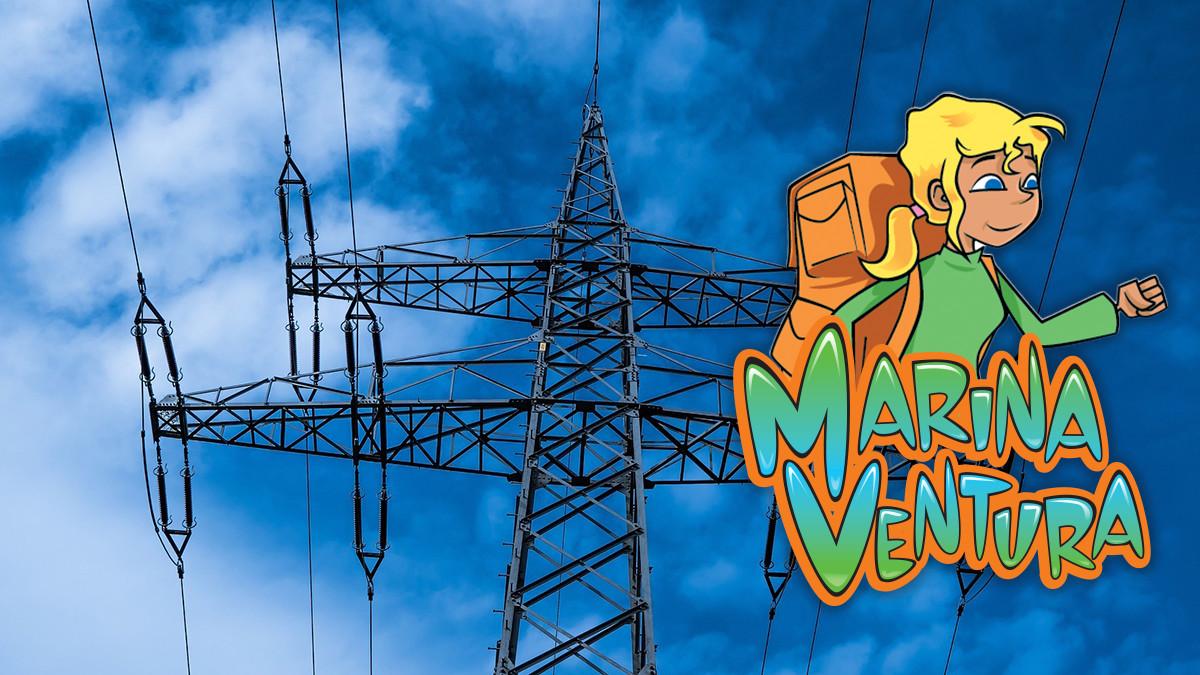
Hi guys! Marina Ventura here.
Map App and I are on a mission to explore the WHAT, HOW and WHY about electricity pylons that help carry electricity from where it’s produced to where’s its needed.
Wanna come too? Excellent!
Have you ever thought about how the electricity we use every day gets to our homes, schools and places of work? Well, there’s some seriously cool technology that’s used.
Electricity is generated either at power stations that use fuels to create steam that drive turbines OR by using natural forces such as solar, water and wind power.
Once the electricity has been created, it needs to be moved to where it’s needed, and that’s done through a network of special cables. It sounds a bit like the motorway network that connects our towns and cities together and helps us get from A to B quickly and safely.
National Grid
The network of electricity cables is known as the national grid. It comprises thousands of miles of overhead and underground cables that carry the electricity to where it needs to go… but you need to get the electricity ready before it can set off.
It’s not because it needs to pop to the loo or grab a packed lunch for the journey! The electricity just needs to be increased in voltage.
Most electricity is generated at 22,000 volts. It’s increased to as much as 400,000 volts to help it travel more efficiently over long distances but that much voltage would be far too much to use in our homes.
To get safely down to the 240 volts we use at home, school and places of work, the electricity passes through substations which step the power back down.
One very visible and really important part of the national grid is a very distinctive and easily recognised kind of super structure.
Any ideas what that might be?
It’s the Pylons, of course!
What are pylons?!
Pylons are the tall metal structures which carry overhead cables.
They might not be something you give much thought to, even though you can see them in nearly every part of the country, but they’re absolutely essential to getting the electricity to where we need it.
We want YOU to come up with your own designs for a pylon of the future. Don’t worry, we’re going to give you loads of electrifying facts and tips about what makes a great pylon.
The history of pylons
We’re going to start by going back to where the story of pylons began.
Did you know… the word pylon comes from the Greek word ‘pyle’ which means ‘gateway’, and in Ancient Egypt, pylons were impressive obelisk-shaped towers on either side of the temple doors.
In the 1920s, Egyptology was all the rage after the discovery of King Tutankhamun’s tomb. It was at this time when the first steel pylons were erected, eventually becoming the gateways to electricity for everyone.
The UK’s first electricity pylon was built at Bonnyfield, near Falkirk in Scotland in 1928. What we know as the grid didn’t start operating until a decade later.
Today’s pylons

Today, there are almost 22,000 pylons across England and Wales, carrying over 4½ thousand miles of high-voltage overhead cables – that’s enough to stretch from London to Mumbai.
Here’s a fun fact – whilst we know them as pylons in the UK, they’re more correctly called suspension, tension or transmission towers. To complicate things, in the US ‘pylons’ are traffic cones!
Pylons are increasingly important – especially with the development of smart and renewable energy.
Demand for clean electricity is increasing. To meet that demand and connect new sources of electricity generation, the grid needs to grow. In fact, it’s forecast the same capacity has to be built in the next ten years that took us a century to build!
It’s a seriously big challenge!
Otherwise, it’s like having thousands of trains to carry all the goods we need around… and not enough track!
It’s time to design
It’s a big challenge for the grid and also a challenge for you too!
We want YOU to help come up with some cool designs for pylons of the future. There’s lots of think about – not just how they look, but also materials used and how they are built.
We can’t wait to see your ideas! Send them to us here.
Join us next time as we go deeper into the grid and find out more about what makes a perfect pylon!
Watch Georgia design a pylon below…
Listen to Marina Ventura Energy Explorer below!
Marina Ventura Energy Explorer is made with support from Grid for Good by the National Grid.





